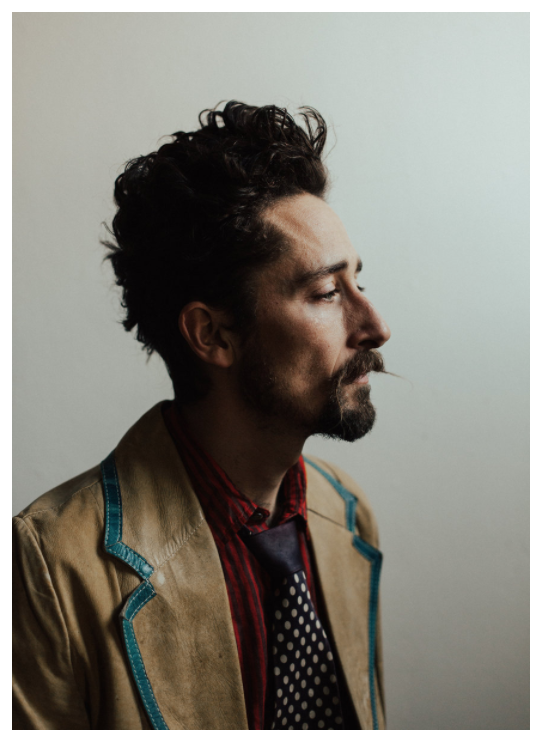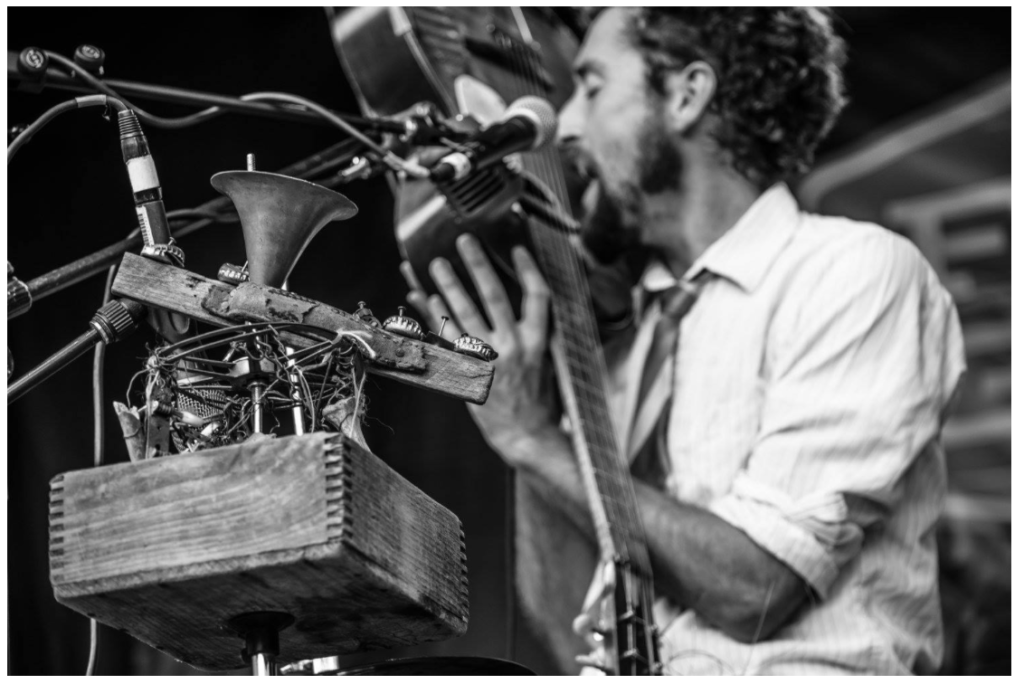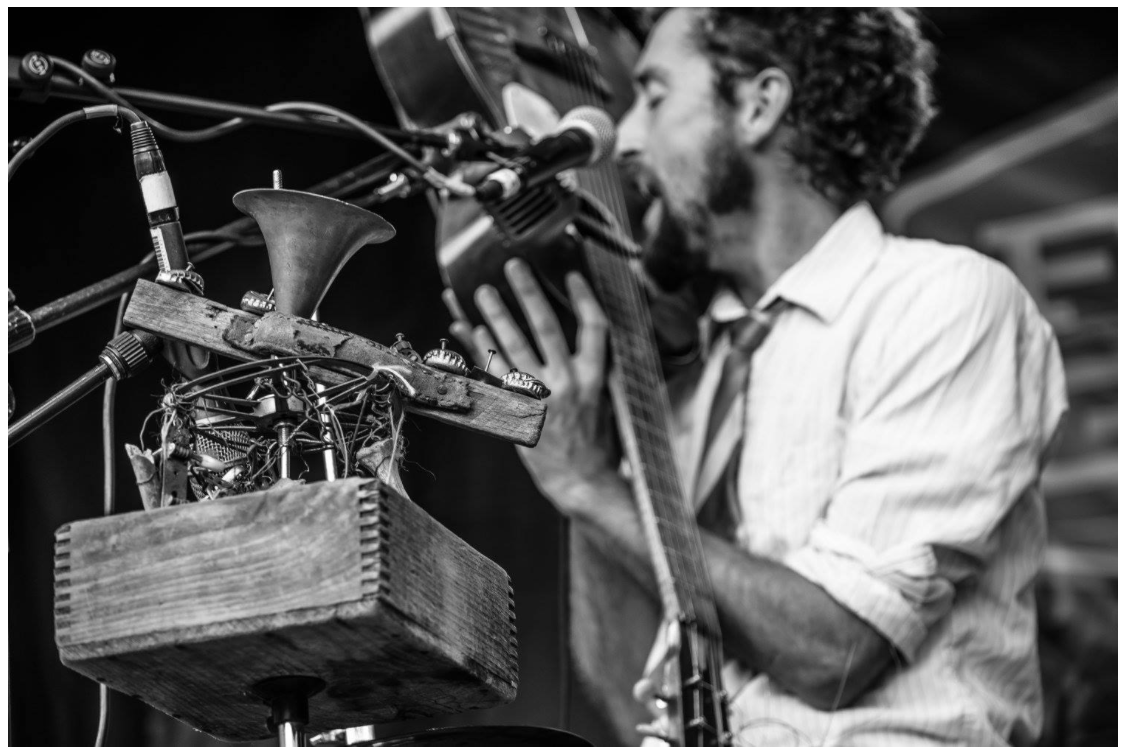An Interview with The Suitcase Junket: Inspiration from Limitation
Matt Lorenz is one of the most dynamic performers I’ve ever seen. I first encountered him opening for Charlie Parr at Atwood’s a few years ago and it was astounding from first to last note–gritty and soulful. He’s got a special show cooked up this weekend at The Sinclair with a murderer’s row of local acts joining him. We got to chat about the concert and his process for creating The Suitcase Junket.

RLR: I want to talk a bit about this show coming up at The Sinclair. It’s an incredible line up, with your sister, Tim Gearan, Julie Rhodes, and Lula Wiles. How did this come together?
ML: It’s sort of modeled after a show I did up in Northampton over Thanksgiving weekend. I’ve been doing a lot of shows the past couple of years, you know, mostly just me, having an opener or being an opener. And I thought it would be fun to have a bunch of people who I’ve played with over the years together under one bill and do some collaborating, and it went pretty well.
I built some set pieces for that show, some screens and winged sculpture type things to go behind the stage and make it more of a spectacle. I’ve been making sculptures over the years, and I haven’t been able to do it as much lately since I’ve been on the road a lot, but it was a fun way to integrate the musical and visual aesthetic. I figured we’d do another one of those before we shut down for the winter and I hole up and start writing and recording again. Even though it’s one of the first shows of the new year, I still consider it one of the last shows of the year for me.
RLR: There’s probably always a place for you walking a line between serving the songs and having this visually compelling performance in this project. The last time I saw you, you introduced the band, which was cool (like with the baby shoe). So are you thinking about that visual aspect, or is it mostly, “I like the way this sounds”?
ML: It really, for me, comes from the sound. I started introducing the band at the beginning of this year after having the same sort of questions at the merchandise table every night. So I thought, I might as well get this over with on stage, and then it became sort of a fun element.
For me the show really is pretty dynamic visually, because I see everything but for the audience, it’s sort of a guy sitting there; you can see the box of bones, and the high hat. You can tell it’s got a homemade edge to it, but it’s pretty static. Even though I flail around, I’m still just sitting there. So it really does go back to the tunes and how to make ‘em sound good.
At one point, I considered the possibility of having a video camera over my shoulder and projecting my feet on a TV. But when it comes down to it, the only reason I would do that would be just to get people’s minds past the “How is this happening?” wonder of it so they could just take the tunes in more directly.
ML: That idea [of constraints] is sort a main tenet behind the project. That guitar–the reason it ended up in open C is that it just didn’t sound good anywhere else; that was the one spot I could get some decent noise coming out of it. And then learning those new shapes for the first album and learning how to play the guitar was those first couple of years. In the beginning, I couldn’t play up the neck and have it stay in tune, so I used a slide a lot of the time.
There is something about putting yourself in a box and finding your way out of it. You end up poking some interesting holes, whereas if you’re sitting there with a guitar that can do anything, it can be overwhelming. The inspiration you get from limitations can be pretty rich.
RLR: You play piano, fiddle, guitar, percussion, you sing–what am I missing here…
ML: I did spend a lot of time with woodwinds, I play saxophones and flutes. But it’s been a while. I did a little saxophone work on a couple albums a few years ago. It was something I pursued in college, but the main problem for me was couldn’t sing at the same time. I tried.
RLR: So how does being a multi-instrumentalist impact your songwriting or your time in the studio?
ML: It impacts the way I listen. For the first bunch of albums of the project, I stayed pretty well away from overdubbing, although on Dying Star, I put saxophone and violins and extra percussion on there. But mostly impacts my ears. As I go forward, I imagine using more of the arsenal. Going back to limitations, only playing what you can do live has been sort of the limitation and challenge and inspiration of the project up to this point. The next album I’ll be recording this winter, and I’m bringing in a producer and we’ll see how that changes things. I haven’t worked with a producer since Knock It Down in 2011. But I imagine I’ll be getting more into overdubbing and adding more sounds, and then the challenge will be: how do we do this live?
RLR: Do you find yourself thinking about loop pedals so you can introduce new instruments, or do you think that would take something away from the show?
ML: The loop pedal thing … I will probably stay away from it. There’s a pretty significant learning curve on doing it well. So it would take a significant amount of time to get it down. And I feel like if I did it, I would do it to dance around and to free myself from the constraint of sitting down; but then I feel like that it wouldn’t be the same project. Because there’s a certain pull back against technology [in the project]; or it’s “pulley” technology.
RLR: Is that true for you, generally speaking, a pull against technology?
ML: I like both. But sometimes the internet just makes me sad. I love old machinery because I can understand it. I don’t know how to code computers. I don’t know how a microchip works. I understand simple wiring a little bit, and I like messing around with things I can understand. I’m sure if I set my mind to it, I could learn some of that stuff, but the stuff that fascinates me the most is this direct, mechanical or simple electronic kind of stuff. And maybe I’ll grow past that, but that’s certainly the stuff that captures my imagination because I could imagine having come up with that–my brain says “I see how this works.”
RLR: There is a great essay that I know called “Messing About in Science” which is sort of this idea that people learn best when they jump in the deep end of any given phenomena and mess about for a while and poke around in the nooks and crannies and see things from lots of angles, prior to having any formal teaching about it. It seems to mirror some of your experience tinkering with things as a kid–but I wonder if that was true for your musical education or if it started more formally.
ML: As a young kid, I took piano lessons. My sister did and I was copying her. As soon as she started playing piano, I said, “Whatever that is, I want in.” The lessons were great, learning music is like learning a language, but the most deep learning I did with music was, kind of “deep end first”: here’s this instrument, how do you make it work?
Failure being the best teacher, you jump in and flail around. At the beginning of The Suitcase Junket, I was not a drummer, and I think that’s still probably the thing I have the most to learn. But I got on this pile of stuff and started doing it, and booked a couple of shows, and there’s nothing like failing in public that will make you want to improve.
RLR: But for a lot of people, public failure would make them want to stop…
ML: Yeah, yeah, that’s a shame. I think that’s kind of societal these days; this instant gratification. Failure is how we get where we’re going. If you don’t find out which way is the wrong way, how do you know what’s happening? Even on a record I believe that. You get in the studio, and you’re listening, and there’s that thing right there [a mistake or imperfection], but that is the take, and we’re not going to go in and snap it to grid or whatever they do these days.

RLR: One of the things I have always admired in your songs is the real sense of melody, which comes out in all these different ways–it could be the overtone singing, your delivery of lyrics, or fingerpicking. Could you talk a bit about your process for developing songs–are you starting with lyrics, are you locking yourself in a room for three hours, or singing into an iPhone–or maybe not an iPhone if it’s too technologically advanced?
ML: I kind of do a combination of all those things, honestly. I used to use those microcassette recorders. I don’t know if they ever made them well, but they would break every few months, so the iPhone is great. I’ll be walking the dog in the woods, humming a little tune or a line of lyric will pop into my head and I’ll sing it a few times and work it out and record it so I don’t forget it and get home and pick up the guitar and try to fit it in.
Another fun way has been sort of writing as a “band”–I’ll get on the pile and have everything plugged in like I would live and I’ll just start improvising some feel I’ve been hearing or feeling or something I don’t do yet. Eventually, starting to yell out or sing what I think the melody is that sounds right for that sort of thing. It will be discovering something on the fly, or if I’m recording it, listening and deciphering, what did I say there?
Trying to keep those different writing tactics lubed up and well-practiced is good, because if you hit a block with one of them, you can switch to another. And once a year, maybe you’ll get one of those tunes that drops down out of the air, but that’s a rarity.
The Sinclair is going to be a special place to be this weekend. Get your tickets here. See you there.
Photo Credit
Color Portrait: Joanna Chattman

